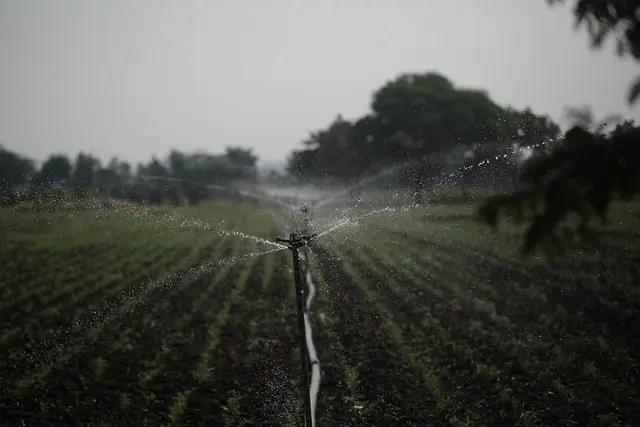- 1.1 What is Irrigation?
- 1.2 Types of Irrigation
- 1.3 What is irrigation management?
- 1.4 Role of Irrigation management in agriculture
- 1.5 Conclusion
What is Irrigation?
Water is a vital element for survival. It is an essential part of agriculture because crops need a large amount of water for the proper growth and development.
Huge water requirements are not fulfilled only by the natural processes thus, it needs artificial process of water supply to the crops.
Irrigation refers to the artificial methods of providing required water to the crops. It’s an essential practice to supplementing the required moisture to the soil. The practice helps to meet all the water requirements of the crops.
Types of Irrigation
Surface irrigation
It is the oldest method of irrigation in surface irrigation system water is distributed across the surface of an agricultural land without the use of any pump. Water reaching through surface makes it wet and infiltrate into the soil.
Localized irrigation
It is a common method of irrigation in which water is applied through network of pipes to each plant gradually under a low pressure.
1.2.3 sprinkler irrigation
In this system water is mounted to a central location and sprinklers are attached to distribute the water overhead by high pressure sprinkler and guns.
Drip irrigation
This is the most efficient method of irrigation, if conducted properly. In this system water is delivered drop by drop at the root zone of the plants. It saves about 80 to 90 percent of water usage in agriculture.
Centre pivot irrigation
this system of water moves in a circular pattern where water is fed from a pivot point or the centre. It is a form of sprinkler system in which segments of pipes are joined together to from a circular system of water.
Sub irrigation
sub irrigation has been used from many years in the areas with higher water tables. The method consists of artificially raising the water table to allow the soil to be moistened from the deeper surfaces near the roots.
Manual Irrigation
It is a time taken and labour-intensive method of irrigation in which water is distributed through water cans by manual labour.
What is Irrigation Management?
Irrigation management refers to the process of controlling and optimizing the use of water resources for agricultural purposes. The goal of irrigation management is to ensure that crops receive the appropriate amount of water at the right time. It is to maximize their growth and yield while minimizing water waste and environmental impact.
Effective irrigation management involves a range of activities, including selecting appropriate irrigation systems and technologies. It will determine the appropriate water application rates, scheduling irrigation events. This management is based on crop water needs and climate conditions, monitoring soil moisture levels, and maintaining irrigation infrastructure.
By managing irrigation effectively, farmers can optimize their water use, conserve water resources, increase crop yields and quality, and minimize negative impacts on the environment. Additionally, irrigation management helps to improve food security and contribute to sustainable agriculture practices.
Role of Irrigation Management in Agriculture
Irrigation management allows resources to generate their maximum benefits that facilitates to achieve all objectives of agriculture. Management of water and soil is obtaining better yield by the efficient use of water resources without damaging the environment.
Irrigation management plays a critical role in agriculture by ensuring that crops receive the appropriate amount of water at the right time to maximize their growth and yield. It is particularly important in areas where rainfall is insufficient or irregular, or where water resources are limited.
Conclusion
In a summarize way, irrigation management plays a crucial role in agriculture by improving crop yield and quality. It ensures efficient use of water resources, enhancing crop resilience, reducing environmental impact, and improving food security.
In addition, by managing irrigation effectively, farmers optimize their water use, conserve water resources, increase crop yields and quality. And minimize negative impacts on the environment, ultimately contributing to sustainable agriculture practices.

